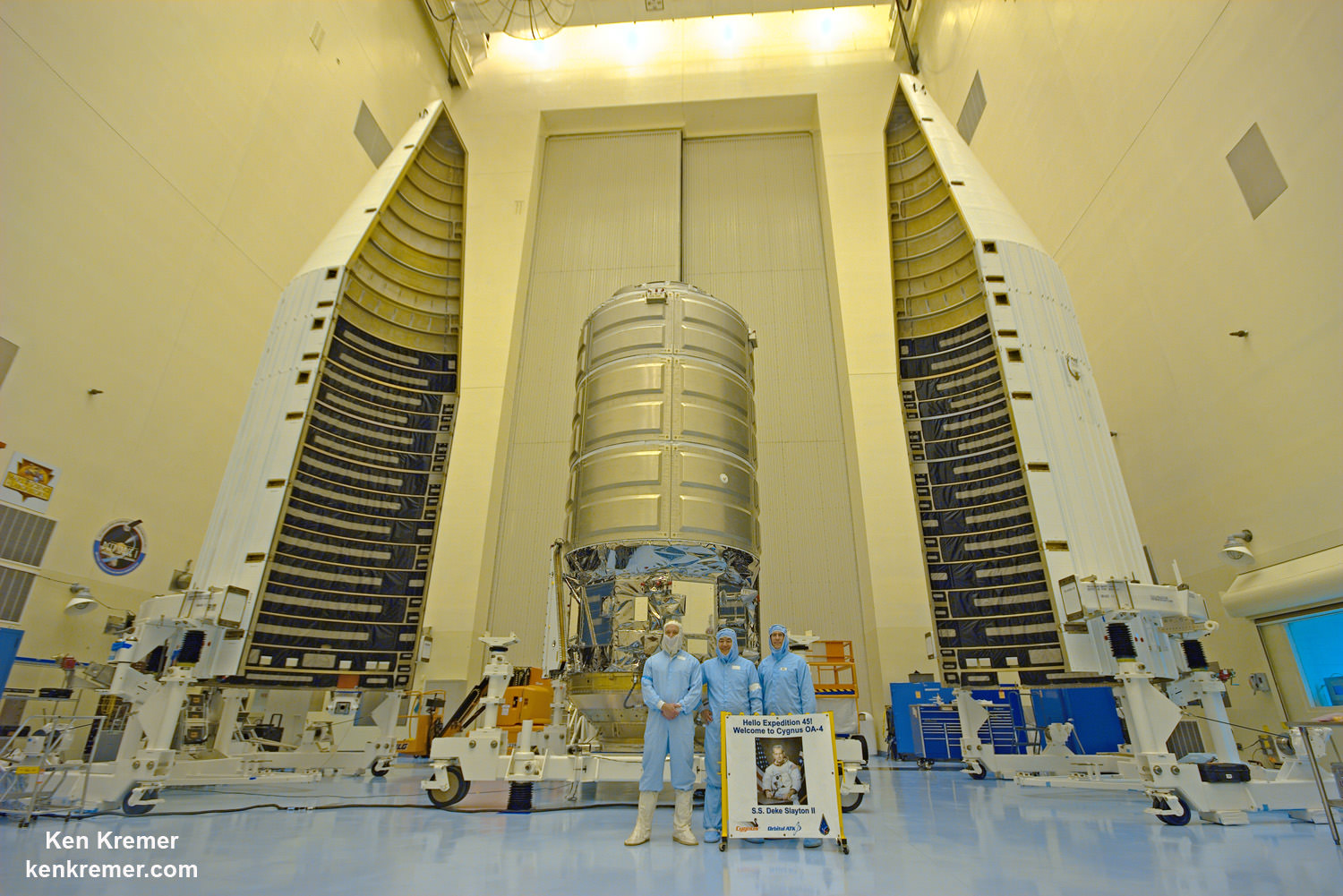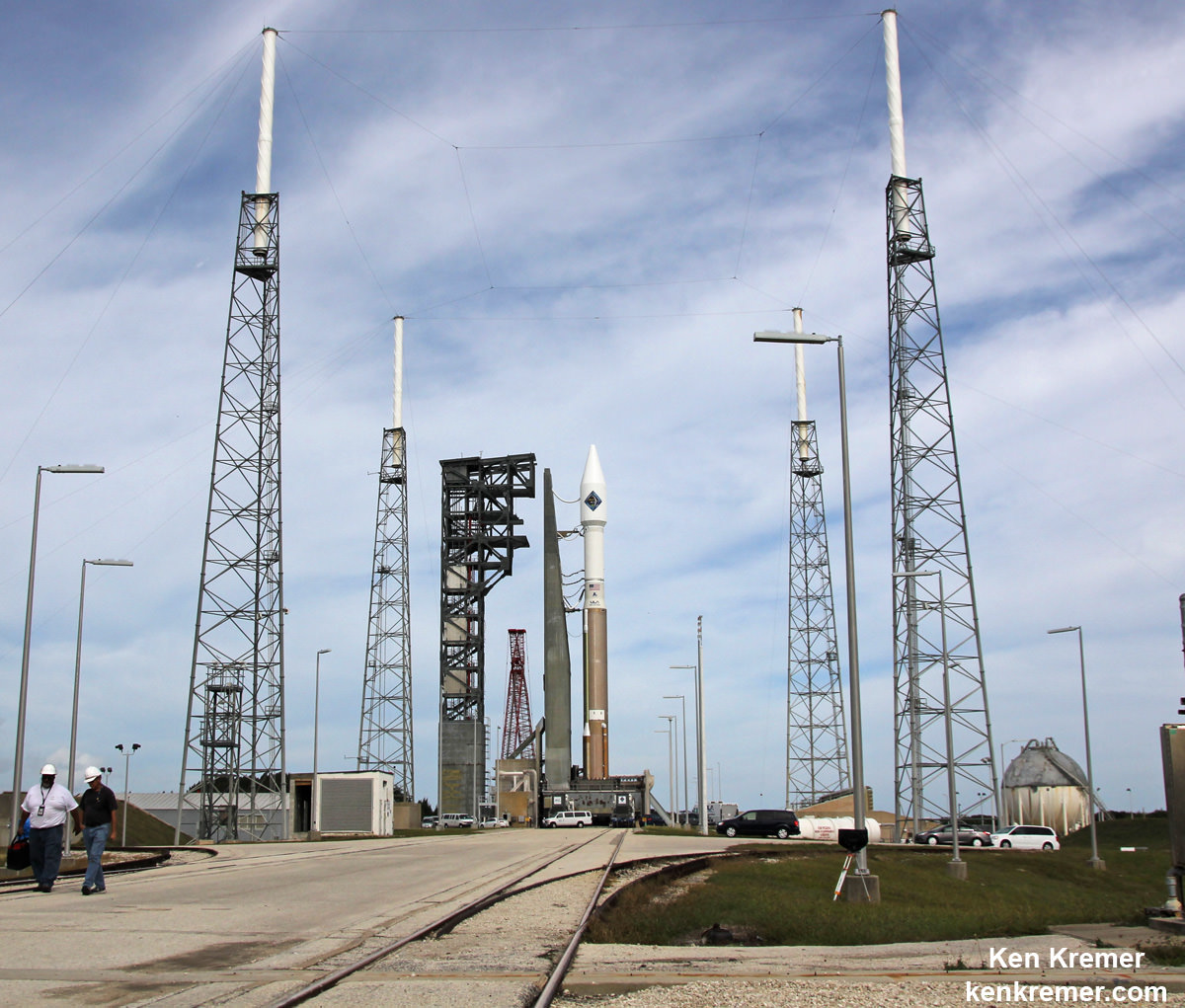
KENNEDY SPACE CENTER, FL – In the shadow of the spanking new commercial crew access tower that our astronauts will soon ascend to restore America’s human access to space, the first ever Atlas V rocket that will launch a commercial Cygnus cargo freighter to the International Space Station (ISS) is poised for blastoff on Thursday, December 3, from the Florida Space Coast and resume the train of critically needed American cargo launches to the orbiting science laboratory.
The stakes are high for NASA and the ISS partners following a string of three cargo mission mishaps over the past year resulting from a trio of launch failures by both US and Russian rocket providers involving Orbital ATK, SpaceX and Roscosmos.
The ISS and her six person crew cannot live and work on the station and fully utilize its research function without a steady stream of resupply missions. The Dec. 3 launch marks the ‘Return to Flight’ for Cygnus.
Excited crowds are gathering in central Florida from across the globe to witness the historic liftoff, which could offer spectacular viewing as its set for approximately 30 minutes after sunset.
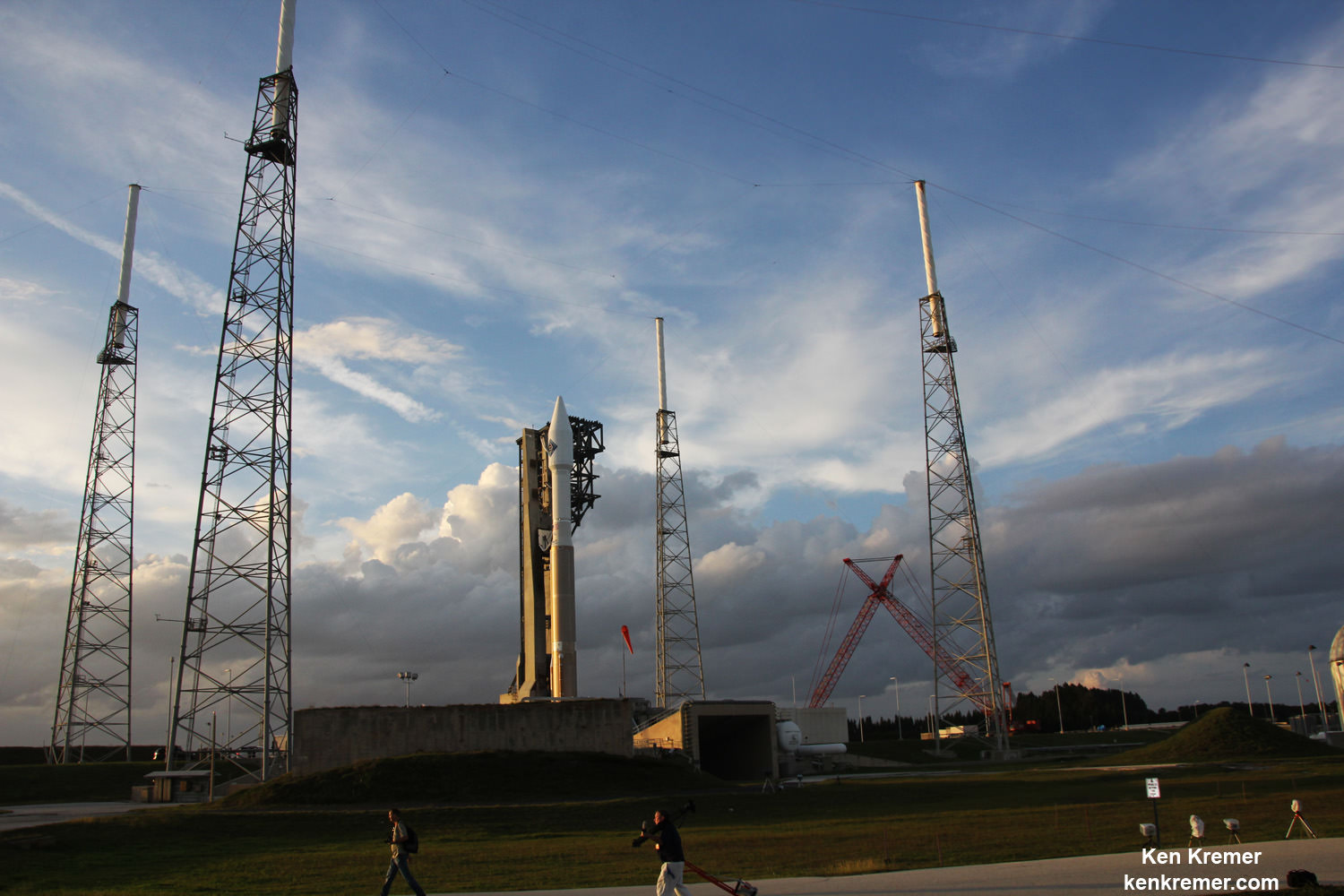
The United Launch Alliance (ULA) Atlas V rocket will liftoff on the CRS-4 resupply mission with the private Orbital ATK Cygnus spacecraft under a commercial resupply services (CRS) contract to NASA from Space Launch Complex 41 at Cape Canaveral Air Force Station in Florida at approximately 5:55 pm. ET.
After passing all launch and flight readiness reviews from ULA, Orbital ATK, and NASA the 194 foot tall Atlas V booster was rolled out to the launch pad on the morning of Dec. 2 a distance of about 1800 feet by a pair of track mobiles.
The launch window has a duration of 30 minutes in case weather or technical factors cause a brief delay from the opening of the window at 5:55 p.m.
Air Force weather forecasters are currently calling for a 60 percent chance of acceptable conditions at launch time. Unsettled but very changeable weather has rolled into the central Florida region.
The primary concerns are for violating the three constraints – for the cumulus cloud, disturbed weather and thick cloud rules.
The Atlas V/Cygnus CRS-4 launch coverage will be broadcast on NASA TV and the NASA launch blog beginning at 4:30 p.m. Thursday – http://www.nasa.gov/multimedia/nasatv/index.html
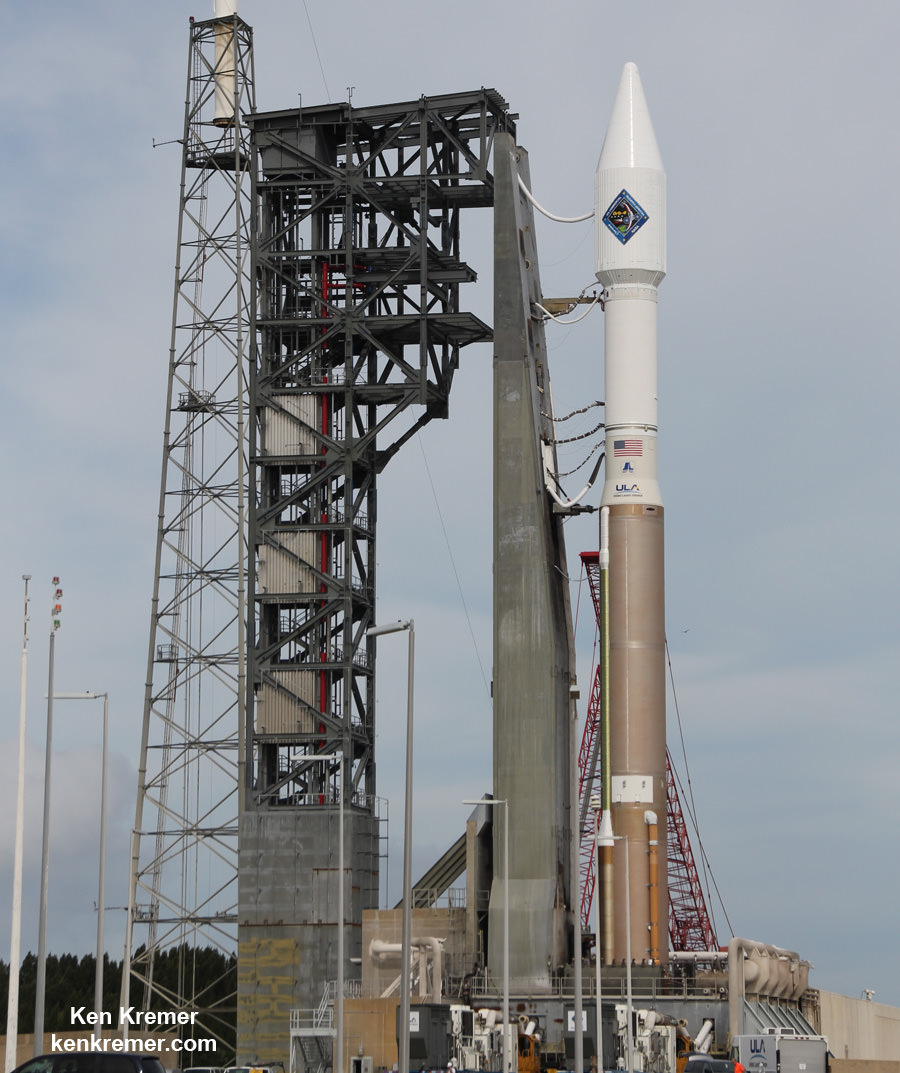
CRS-4 counts as the first flight of Cygnus on an Atlas and the first launch to the ISS using an Atlas booster.
The total payload packed on board is 3513 kilograms (7745 pounds), including science investigations, crew supplies, vehicle hardware, spacewalk equipment and computer resources.
Among the contents are science equipment totaling 846 kg (1867 lbs.), crew supplies of 1181 kg (2607 lbs.), and spacewalk equipment of 227 kg (500 lbs.).
CRS-4, also known as OA-4, is also the fourth contracted cargo resupply mission that Orbital ATK is conducting for NASA.
Cygnus is named the ‘SS Deke Slayton II’ in memory of Deke Slayton, one of the America’s original seven Mercury astronauts. He was a member of the Apollo Soyuz Test Flight. Slayton was also a champion of America’s commercial space program.
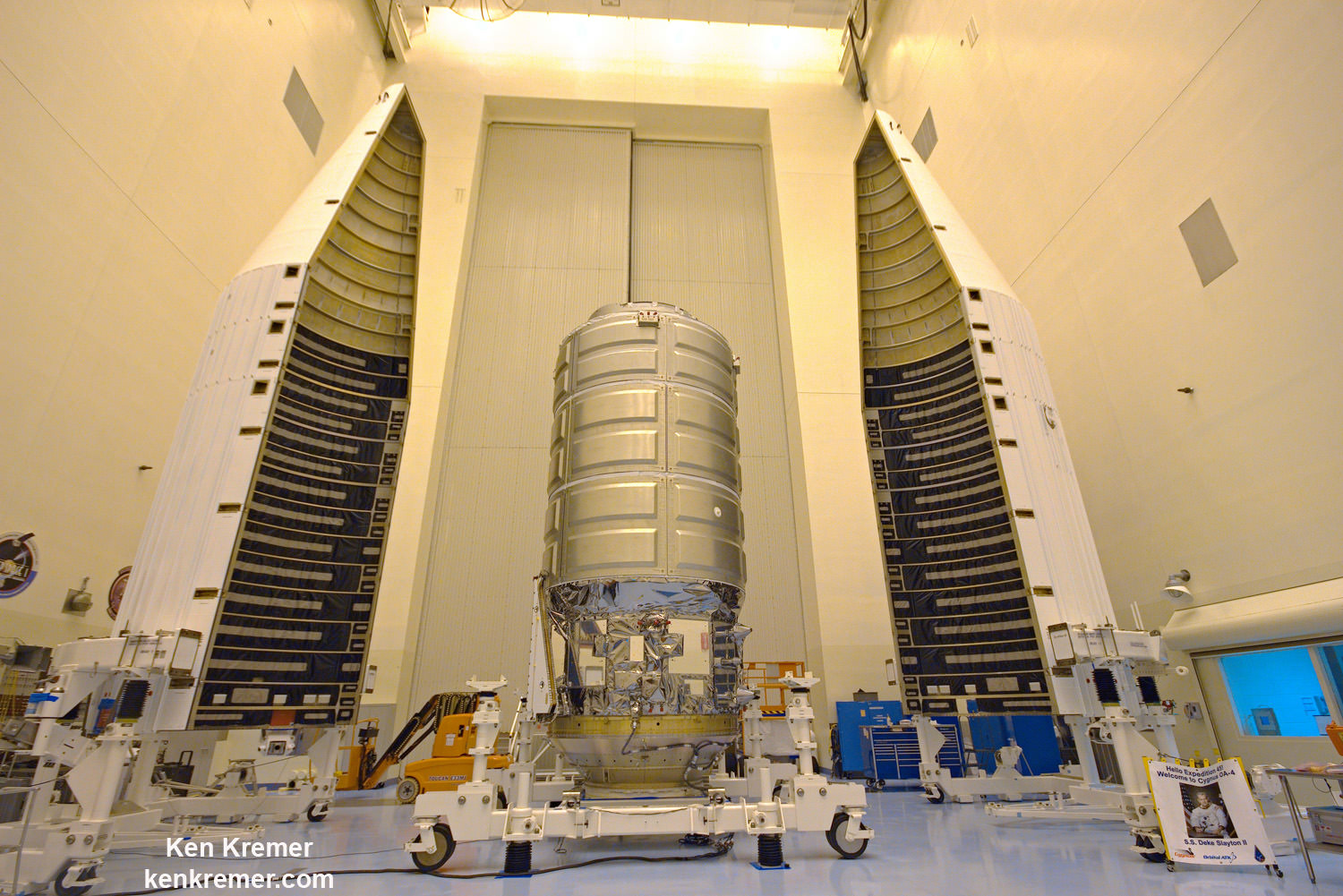
Orbital ATK holds a Commercial Resupply Services (CRS) contract from NASA worth $1.9 Billion to deliver 20,000 kilograms of research experiments, crew provisions, spare parts and hardware for eight Cygnus cargo delivery flights to the ISS.
Orbital ATK has contracted a second Cygnus to fly on an Atlas in March 2016 on the OA-6 mission.
NASA has also contracted with Orbital ATK to fly three additional missions through 2018.
Stay tuned here for Ken’s continuing Earth and planetary science and human spaceflight news.
